Telinga-tastic: super close up recordings of birds & crickets
In Summer 2014 I’d finally bit the bullet and bought a Telinga Universal MK2 parabolic dish reflector, a piece of equipment that I’d been umm’ing and ah’ing about for years. Though a bit pricey in my opinion, this is a well-built, lightweight parabolic with the added benefits of it allowing you to use your microphone of choice and its relative portability due to the dish itself being foldable.
I’m using an MKH8040 in the Telinga, guaranteeing a flat frequency response, high sensitivity & low noise. It being a cardioid mic it is relatively susceptible to handling noise, so some practice is required using this in a parabolic as a lot of this kind of recording is handheld whilst tracking your subject (like flying birds for instance). The above sound file is an example of tracked recording, as these are the calls of common terns that were flying over my head and around me, at distances ranging from ~20 to 5 meters from the mic. They seemed to be playing a game of chase with each other, which I don’t know if it’s a mating ritual or simply them having fun.
The purpose yet unreal effect of using a parabolic reflector such as the Telinga is that when you manage a dead-on focus on your subject, you can get extremely close up and isolated recordings. It can be quite difficult to achieve this focus though, as the signal is mono so when monitoring over headphones you have no sense of localisation or direction. Therefore if you can actually see your subject you’re going to have a much easier time, but this is not always possible. I also tend to have only one ear covered by a headphone pad, with the other ear free to listen to the actual environment, helping me with localising my subject.
Now here are some black-headed gulls that also appeared to chase each other, flying pretty much over my head whilst tracking them with the Telinga. At the closest point, they were maybe ~3m away from the mic.
When I recorded this skylark it was actually quite a windy day, which you can hear in the recording. Nevertheless, the wind protection on this Telinga system is pretty good, and once again if you can get a dead-on focus on your source you can still achieve a useful & nice sounding recording.
Here are the warbling calls of a group of Eurasian Oystercatchers. They were roughly 100 meters away from me, so this is a pretty good demonstration of how close up you can get with a system like this.
Reed warblers are some of my favourite sounding birds, as their calls are bordering on psychotic with their non-stop chattering. Again it was a rather windy day, and the reed warbler predictably hiding in the noisily bending reeds makes for not an as clean recording as I’d have liked, but once again a fine demonstration of the awesome close-upness of a parabolic system. Distance to subject was about 50 meters.
All the previous recordings were made at the marshlands of Rye Nature Reserve. I also went to Lower Wepham Woods where I was spectator to what I found quite a magical moment between two buzzards, who for 30 mins were circling above the canopy and an open patch of land on the edge of the forest, continuously calling at each other. This forest is relatively close to a busy highway and polluted by airplanes flying over regularly as well, so even though I recorded for a long time, the best snippet I got was this here below.
And finally, here’s a cricket stridulating in the grass. In this case, I was able to get the mic extremely close, roughly 30 cm away from the cricket. Due to the 8040’s frequency response ranging beyond the advertised 40khz, and cricket sounds generally reaching well into the ultrasound regions, the results when pitching down are interesting as you retain a lot of high frequency content even until as low as -36 semitones, as demonstrated in the file below.
The logical conclusion of using a parabolic reflector is that it is a unique tool which can lead to fantastic & otherwise unobtainable results. It is of course naturally fairly restrictive as the frequency band where the amplification is such that it achieves a zoom-like effect is limited, depending on the size of the dish itself. In the case of this Telinga dish, the useful frequencies would range somewhere in the bands of human speech and birdsong.
You can also buy smaller and thus more portable parabolic dishes from different companies, but this would limit the useful range to high frequencies only. If you want to achieve a ‘zoom’ like effect on lower frequencies, you either need a humongously sized reflector or, far more practical, a long gun mic such as the Sennheiser MKH70. Guess what is next on my list of gear to be purchased…

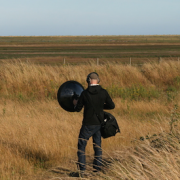
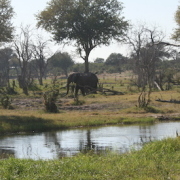

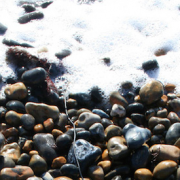
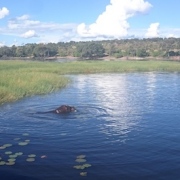

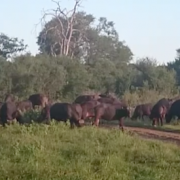




Excellent Daan, your review of a parabolic reflector, particularly the Telinga Universal MKii. At the end, more or less you said, about the zoom effect of a parabolic microphone, the same result may be obtained using a Long Gun Mic. I can say that using a parabola you have an amplified signal, unlike using a gun mic you have a directional signal but not an amplified one. So, the gain obtained using a parabolic microphone in not at all reached using any Long Shotgun Mic.
So, for distant signals, I love parabolic microphone!!!
All the best 🙂
Thanks for reading & your comment Calandrella.
You are right about shotguns, they don’t do amplification like a parabolic does, which is also why they’re more natural in their frequency response (i.e. the parabola only amplifies a range of frequencies). What a shotgun of course does do is rejection of off-axis signal as much as possible, and combined with the extremely high sensitivity of for instance the MKH8070 (112 mV/Pa!! insane) you should be able to get relatively close up recordings of distant point source sounds, depending on the environment you’re in of course.
But it’s certainly a different tool for a different job. To record ‘isolated’ birdsong, nothing can quite beat a parabola. If I’m imagining myself recording lower frequency sounds however (say the grumbling of a distant mammal, like a lion or elephant), the parabola won’t be as effective, and a long gun probably would be the better tool.
There is a interesting comparisons of parabolic microphones available here:
http://jezrileyfrench-aquietposition.blogspot.se/2015/02/parabolic-reflectors.html
Recently there has been some ‘lively’ discussion on parabolics – on facebook and also the yahoo ‘nature recordists’ website – so perhaps now is a good time for a brief mini-guide:
firstly, those of you unfamiliar with parabolics (inc. how they work etc) should check out the wide range of articles on the web – always read impartial ones. Manufacturers sometimes have articles on their site and the good ones do not make exaggerated claims about their products. It is also true that there are some articles online which fundamentally misunderstand the basics of parabolics, good sound and listening in general. If you’re unsure then ask around – you can, for example, post a comment here or ask a question on the ‘a quiet position’ facebook group, where over 2000 recordists with a wide range of experience will be able to offer advice. Always avoid articles on various ‘paranormal’ websites.
In very basic terms, a parabolic mic / dish system is the closest thing to a zoom lens for sound – allowing distant sounds to be brought into sharper focus, while rejecting the surrounding ambience (in mono parabolic systems)
It is possible to build a parabolic yourself and there are lots of ‘how to’ sites on the net.
There are currently 3 companies selling complete parabolic kits (dish, mic & handle etc) that are worthy of recommendation. There is at least one other company on the market – based in the US and the subject of a fair amount of debate online. I can’t, in all honesty, recommend their products and would advise caution when considering their products. &
Wildtronics (US company whose products I can’t, in all honesty, recommend. There are various issues, some of which are evident when listening to the sound samples on their site)
As mentioned Telinga has a very long track record and receives consistently high positive feedback from fellow field recordists. Their systems are at the top end of the price range, but as with all things there is usually a good reason and I do know lots of folks who’ve had their Telinga’s for years and years. In my experience the best sound i’ve heard from a parabolic system is a Telinga universal fitted with a sennheiser capsule – not a cheap option but there’s an open and natural sound to this set up. Apart from the Universal above (which can be fitted with a couple of different polar pattern mics) the most listenable and open sounding systems use omni capsules. Sticking a hyper-cardioid (shotgun mic) capsule into a parabolic isn’t the best idea as it often peaks the key sound and in very simple terms it fights with the effect of the parabolic dish – remember a hyper-cardioid is in effect normally a long metal tube with a capsule towards the bottom & sound travels from the front towards the capsule – with a parabolic dish the focal point of the sound comes from around the dish itself & reaches the capsule on a horizontal plain (nb. there will still be some signal coming from other directions of course) – hence the reason an omni polar pattern provides the most listenable sound quality.
Key factors to look out for inc.
. good protection from handling noise
. dish size – a larger dish gives better low frequency response
. clean paths (by this I mean low self noise of the mic, well constructed electronics, phantom powering etc)
. mono vs stereo – for most folks mono is what they’ll want from a parabolic but there are designs out there by all of the manufacturers that are stereo. Some have a mono capsule at the focal point of the dish & additional capsule/s in very near proximity, the result being to capture not only the prime sound but also some ambience around it. For species recording you’ll probably want to stick to mono (2 of the 3 designs allow you to select mono or stereo) but for more creative applications the stereo option can be useful, particularly on architectural acoustics.
. look for sound samples on the makers websites AND elsewhere online – avoid sound samples that have any kind of processing (normalising, eq-ing or that have been recorded using only stills cameras – all of which have elements of either processing built in or do not have quality pre-amps – the better sites will have samples recorded with various recorders & for the ones with the best track record its highly likely you’ll be able to find a sample online using the same model recorder as the one you have)
. 3 companies (Telinga, Lisn & Dodotronic) built and tested throughout development, and continually since, using professional, pro-sumer and entry level field recorders. One was developed using video and still cameras. In my opinion it is only possible to develop a decent microphone of any type when tested with the appropriate equipment. Video and stills camera’s have built in limiters that often can’t be turned off or other types of processing. It is of course quite possible to develop a parabolic based only on the physics, however field recording / listening has and is continuing to move forward and it is more and more understood that the role of pre-amps, processing, playback levels, subtle details of the mic capsule sound etc etc. make a big difference. For lots of folks perhaps just interested in collecting, for example, bird species sounds, they will perhaps be happy with any parabolic that in basic terms ‘does the job’ – but for those who want more than this the advice of any recordist would be to approach the choice of equipment with more thought and attention to how it ‘feels’ on the ear, rather than the physics. With conventional microphones for example, some people like the sound of Schoeps mics and some don’t – some like a Sennheiser MKH and some prefer the sound of a Sanken etc etc. Buying any mic on the spec sheet alone is not a good idea. Would you buy a car or a camera just on the spec sheet ?
. if in doubt ask the community – the wide, varied field recording community is 99% friendly, supportive and open to the sharing of knowledge.
. don’t be swayed by the science only – as with all mics, all techniques, the spec sheet or theory is only a part of the story. A good company will obviously let you know the key features of their products but those with a proven track record will not need to be critical of other makes. Put simply, the quality & wide usage of the product will speak volumes.
. a good tip when purchasing any piece of kit is try to buy from those folks who have a reputation beyond their own products – so companies, staff / individuals who have a good reputation for their own work or who are active in the field in various ways. Avoid companies who say things like ‘the best’ or ‘better than everyone elses’ etc – good products speak for themselves. Its quite easy to spot the good folks….